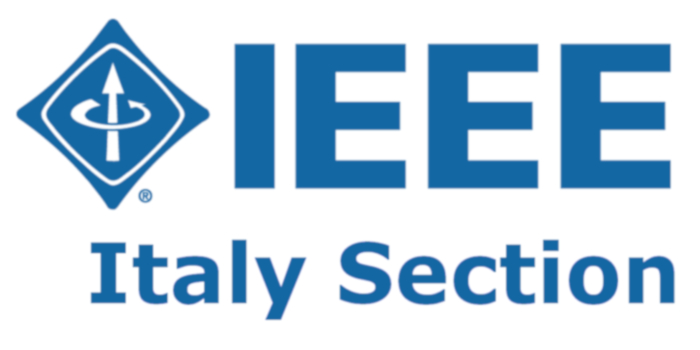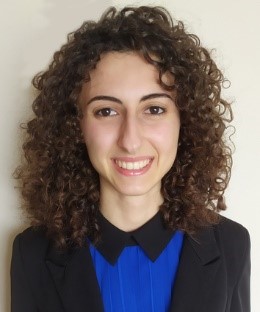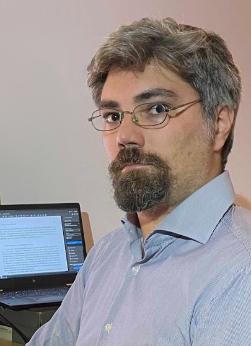WORKSHOP
The versatility of magnetism: an overview on recent research in spintronics, energy and biomedicine applications
7 July 2023
CHAIRS
Vito Puliafito, Politecnico di Bari, Chair of the Italian Chapter of IEEE Magnetics Society, vito.puliafito@poliba.it
Paola Tiberto, INRIM Torino, President of the Italian Association of Magnetism AIMagn, p.tiberto@inrim.it
Carlo Ragusa, Politecnico di Torino,
carlo.ragusa@polito.it
OBJECTIVE
This workshop is structured in three panels dedicated to some of the many areas of application for magnetism and magnetic materials.
The first panel will present recent research on spintronics, with a particular focus on spintronics-based neuromorphic and unconventional computing, and up-to-date results in another hot topic of this field: skyrmionics.
The second panel is about energy applications of magnetic materials, starting from modeling of powder cores and analysis and design of inductive components and related materials for power electronics applications.
The last panel is devoted to applications of magnetism in biomedicine. Here, modeling and characterization of magnetic nanoparticles for application in precision measurements, such as magnetic hyperthermia and magnetic particle imaging, will be the core of the discussion.
PROGRAM
14:30 -14:35 – Welcome to Participants
Vito Puliafito, Politecnico di Bari
Paola Tiberto, INRIM Torino
Carlo Ragusa, Politecnico di Torino
Panel 1: Spintronic
Panel Chairs: Vito Puliafito
14:35 – 15:10 – Philippe Talatchian – SPINTEC, France, INVITED
Harnessing Stochastic and Microwave Spintronics for Unconventional Computing
15:10 – 15:25 – Luciano Mazza – Politecnico di Bari, Italy
Simulating spintronic Ising solvers for combinatorial optimization problems
15:25 – 15:40 – Eleonora Raimondo – Università di Messina, Italy
Static and dynamic study of skyrmions in magnetic multilayers: field-driven collapsing dynamics and temperature-gradient-driven motion
Panel 2: Energy
Panel Chairs: Carlo Ragusa
15:40 – 16:15 – Frédéric Mazaleyrat – Université Paris-Saclay, France, INVITED
Modelization of powder cores permeability by statistical average chain approximation
16:15 – 16:30 – Luigi Solimene – Politecnico di Torino, Italy
Analysis and design of inductive components and related materials for power electronics applications
16:30 – 17:00 – COFFEE BREAK
Panel 3: Biomedicine
Panel Chairs: Paola Tiberto
17:00 – 17:35 – Marco Coisson – INRIM, Torino, Italy, INVITED
Fe-oxide Nanoparticles for Magnetic Hyperthermia: Routes for Determining their Heating Power
17:35 – 17:50 – Gabriele Barrera – INRIM, Torino, Italy
Factors affecting Magnetic Particle Imaging: Frequency-sustained Hysteresis and Dipole-dipole Interactions
17:50 – 18:05 – Riccardo Ferrero – INRIM, Torino, Italy
Influence of magnetic nanoparticles clustering and magnetic field excitation on hyperthermia properties



Philippe Talatchian, INVITED
Title: Harnessing stochastic and microwave spintronics for unconventional computing
AUTHORS – N-T. Phan1, L. Soumah1, A. Sidi El Valli1, A. Hakam1, L. Anghel1, M. W. Daniels2, R. Sousa1, J. Langer3, J. Wrona3, A. Madhavan2, M. D. Stiles2, U. Ebels1, P. Talatchian1
1 Univ. Grenoble Alpes, CEA, CNRS, Grenoble INP, SPINTEC, 38000 Grenoble, France
2 PML, National Institute of Standards and Technology, Gaithersburg, Maryland 20899, USA
3 Singulus Technologies AG, 63796 Kahl am Main, Germany

ABSTRACT – Magnetic tunnel junctions (MTJs) hold promise for energy-efficient unconventional computing, including spintronics-based neuromorphic computing. To mimic interneuron connections, we propose a novel method of coupling superparamagnetic tunnel junctions (SMTJs) using linear circuit elements, enabling large SMTJ arrays without heavy peripheral circuitry. Experimental results demonstrate robust and tunable coupling, reaching a 58% correlation between SMTJs. This advancement facilitates the implementation of energy-based models like Boltzmann machines and invertible logic networks. Additionally, we showcase the utilization of a spin-torque nano-oscillator (STNO), another MTJ-based structure, for generating unbiased, truly random bitstreams. Leveraging phase noise in the injection-locked STNO addresses the critical need for unbiased randomness in stochastic computing and encryption applications. This convergence of stochastic and microwave spintronics pushes the boundaries of unconventional computing paradigms in hardware (StochNet ANR-21-CE94-0002-01).
SHORT BIOGRAPHY – Philippe Talatchian, a CEA research scientist at SPINTEC laboratory (Grenoble), holds a Ph.D. in Physics from Paris-Saclay University. Under Julie Grollier’s guidance, his doctoral research focused on synchronizing spin-torque nano-oscillators for pioneering spintronic neuromorphic computing. In his postdoctoral work at the University of Maryland and the Mark Stiles (NIST) group, Philippe implemented energy-efficient computing with networks of superparamagnetic tunnel junctions. Currently, at SPINTEC, Philippe leverages spintronic devices’ physics for unconventional computing, including stochastic computing schemes and coupled nonlinear dynamical computing models.
Luciano Mazza
Title: Simulating spintronic Ising solvers for combinatorial optimization problems
AUTHORS – Luciano Mazza1, Andrea Grimaldi2, Eleonora Raimondo2, Pietro Tullo1, Davi Rodrigues1, Kerem Camsari3, Vincenza Crupi2, Mario Carpentieri1, Vito Puliafito1, Giovanni Finocchio2
1 University of Messina, Italy
2 Politecnico di Bari, Italy
3 University of California Santa Barbara, CA, USA

ABSTRACT – We have analyzed how magnetic tunnel junctions (MTJs) can be used for realizing a coherent Ising machine for the solution of the Max-Cut problem. The Max-Cut problem consists in finding the optimal bipartition of an undirected weighted graph, in a way that the sum of cut edges is maximized.
We solve this problem by simulating a coherent Ising machine (CIM) and with a probabilistic computing (PC) solver. In both cases, the spintronic technology is key for realizing a fast, efficient, and low-power hardware solver.
The first solution is obtained by simulating coupled injection-locked spintronic oscillators; in the second case, MTJs can be used to realize a true random number generator.
We compare the methods using reference problems, and the obtained results are comparable to state-of-the-art solvers, with the highest accuracies obtained by the probabilistic implementation.
SHORT BIOGRAPHY – After the bachelor’s degree in electronics and telecommunications, Luciano Mazza started the master’s degree in electronic engineering at Politecnico di Bari. During this period, he participated in the Erasmus project spending one year at Technical University of Eindhoven (TUE). He graduated cum laude with a thesis on spintronic devices applied to neural network applications. He is a PhD student at Politecnico di Bari working on spintronic oscillators, neuromorphic computing and Ising machines. During his PhD, he spent three months at the CNEA center in Buenos Aires and one year at Thales/CNRS lab in Paris Saclay working on magnetic vortices for neuromorphic applications.
Eleonora Raimondo
Title: Static and dynamic study of skyrmions in magnetic multilayers: field-driven collapsing dynamics and temperature-gradient-driven motion
AUTHORS – E. Raimondo1, E. Saugar2, J. Barker3, D. Rodrigues4, A. Giordano1, M. Carpentieri4, Z. Wang5, W. Jiang5, O. Chubykalo-Fesenko2, R. Tomasello4, G. Finocchio1
1 University of Messina, Italy
2 Instituto de Ciencia de Materiales de Madrid, CSIC, Spain
3 University of Leeds, United Kingdom
4 Politecnico of Bari, Italy
5 Tsinghua University, Beijing, China

ABSTRACT – Magnetic skyrmions are “topologically protected” solitons that have recently received increased attention due to their potential application as information carriers and for unconventional computing.
In the present work, we show qualitatively different collapsing dynamics for pure Néel (PNS) and hybrid skyrmions (HS) induced by a perpendicular magnetic field.
While the current-driven skyrmion dynamics has been explored deeply, the theory of temperature gradient-induced dynamics – Skyrmion-Caloritronics – is still at its early stages of development but it is particularly promising due to its low energy consumption. In this work, we study the effects of thermal gradients on skyrmion motion in different systems (single-layer ferromagnet with interfacial Dzyaloshinskii-Moriya interaction and multilayer) inspired by the experimental results of Z. Wang et al., and from a fundamental point of view. Our results have fundamental implications in the future development of skyrmionic devices combining thermal gradients and spin-orbit torques where the proper temperature dependence of the parameters should be taken into account.
SHORT BIOGRAPHY – Eleonora Raimondo is a Ph.D. Student in “Bioengineering Applied to Medical Sciences” from the University of Messina, Italy. Her main research activities are the micromagnetic modelling of spintronic devices, including also skyrmions and unconventional computing, especially neuromorphic computing and probabilistic computing with spintronic devices like magnetic tunnel junctions (MTJs).
Frédéric Mazaylerat, INVITED
Title: Modelization of powder cores permeability by statistical average chain approximation
AUTHORS – F. Mazaylerat1
1 SATIE CNRS UMR 8029, Ecole normale superieure Paris-Saclay, Universite Paris-Saclay, Gif-sur-Yvette, France.

ABSTRACT – Derivation of the demagnetizing coefficient of non ellipsoidal solids or composite medium is one of the most difficult problems in electromagnetism. For a single solid object, exact solutions may be derived for various simple shapes involving quite complicated mathematics but never without ambiguity since the coefficient depend on the susceptibility of the material. For composite medium, essentially two approaches are used both based on spatial periodicity hypothesis: the non magnetic grain boundary model and the effective medium theory. Actually, the first one works only for dense materials and the second works at low concentration. Both need fitting of two parameters, the inner demagnetizing factor and the particle’s susceptibility, just because the periodicity hypothesis is never verified for magnetic filling factors larger than 20%. A breakaway model is proposed based on the computation of mathematical esperancy of the statistical distribution of magnetic chains and the subsequent determination of demagnetizing coefficient of an ellipsoid of equivalent aspect ratio. The model is collated with permeability data from the literature for spherical or non-spherical particles based SMCs and shows an excellent agreement with only one ou even without fitting parameter.
SHORT BIOGRAPHY – Frédéric Mazaleyrat is a full professor at Ecole Normale Supérieure de Cachan since 2009. He studied Electrical Engineering in Sorbonne Université (Paris) where he defended his PhD in 1996 on nanocristalline materials. His research is focused on the developpement of new mateirals and the structural dependence of magnetic properties. He’s co-author of over 140 papers in peer reviewed journals on nanocrystalline materials, soft ferrites, hard ferrites, rare earth free magnets and magnetocalorics and modellization of losses in soft magnets.
Luigi Solimene
Title: Analysis and design of inductive components and related materials for power electronics applications
AUTHORS – L. Solimene1
1 Politecnico di Torino, Italy

ABSTRACT – Inductive components are fundamental elements in power electronic converters, and their analysis and design are crucial for achieving optimal performance. The presentation explores the challenges faced in minimizing power losses and maximizing the power density of inductive devices for power electronics. In addition, it provides an overview of the analysis and design methodologies for developing inductive components by exploring various aspects, including magnetic materials modeling considerations.
SHORT BIOGRAPHY – Luigi Solimene received the B.S. (2016), M.S. (2019), and Ph.D. (2022) in Electrical Engineering from Politecnico di Torino, Torino, Italy. Currently serving as a Research Assistant in the Department of Energy “Galileo Ferraris” at Politecnico di Torino, his primary focus lies in the analysis of magnetic materials and components for electrical energy conversion.
Marco Coisson, INVITED
Title: Fe-oxide nanoparticles for magnetic hyperthermia: routes for determining their heating power
AUTHORS – M. Coïsson1, G. Barrera1, F. Celegato1, F. Vinai1, L. Martino1, P. Allia1, P. Tiberto1
1 INRIM, Advanced Materials and Life Sciences Division, strada delle Cacce 91, 10135 Torino (TO), Italy

ABSTRACT – Fe-oxide nanoparticles are a very versatile system for biomedical applications: Fe3O4 (magnetite) can be prepared in form of nanoparticles (NPs) having different sizes and shapes, to tailor the magnetic properties and their capacity to release heat when submitted to a rf electromagnetic field. The possibility to functionalise them to improve their colloidal stability and add biochemical receptors or other molecules (such as drugs) has contributed to make them very interesting for a biomedical application, including magnetic hyperthermia. Based on magnetite, mixed ferrites enhance the possibilities to tailor the NPs magnetic properties by replacing some Fe ions with other transition metals, opening the way to improved performance and novel applications. In this work, we will discuss the magnetic properties of magnetite and some mixed ferrites nanoparticles having potential applications in magnetic hyperthermia. Through static and dynamic hysteresis loops, thermometric measurements, numerical studies on model systems, and machine learning approaches, we will discuss from different point of views the role of particles composition, aggregation state, dipolar interactions, anisotropy, and medium dispersion in the determination of their specific loss power.
SHORT BIOGRAPHY – Marco Coïsson took his degree in Physics in 1998 at the University of Torino, and a PhD in Metrology in 2002 at Polytechnic of Torino. Since then, he was a post doc and then a permanent researcher first at IEN « Galileo Ferraris » and then at INRIM, Torino, working on magnetic materials. His main interests include magnetic properties and magnetisation processes of thin films, nanoparticles, and out-of-equilibrium materials, which he studies experimentally and numerically. His expertise covers high-sensitivity magnetometry, scanning force microscopy, patterning, and numerical characterisation of magnetic properties through machine learning techniques. He is author of more than 180 papers in international peer-reviewed journals.
Gabriele Barrera
Title: Factors affecting Magnetic Particle Imaging: Frequency-sustained Hysteresis and Dipole-dipole Interactions
AUTHORS – G. Barrera1, P. Allia1, P. Tiberto1
1 INRiM, Advanced Materials Metrology and Life Sciences, Strada delle Cacce 91, I-10135 Torino, Italy.

ABSTRACT – Factors affecting the magnetic response of realistic magnetite nanoparticle systems submitted to a sinusoidal driving field H(t) of amplitude and frequency appropriate for typical Magnetic Particle Imaging operations are studied.
The magnetic rate equations give the time-dependent magnetization M(t) over a wide interval of driving-field frequencies. The magnetic behavior of iron-oxide particles for biomedical applications is dominated by frequency-sustained hysteresis and dipolar interaction, which pose some challenges to the typical methods of analysis exploited to produce MPI maps. In particular, the effect on the so-called System Function (SF), which is the core of the MPI image reconstruction, induced by the frequency-sustained hysteresis and dipolar interaction is presented.
SHORT BIOGRAPHY – Gabriele Barrera is a Researcher at Istituto Nazionale di Ricerca Metrologica (INRiM), Turin, Italy.
His research interests focus on magnetic properties and the magnetization process in magnetic nanomaterials of various sizes, shapes, structures and compositions. Mainly, the activity concerns magnetic nanoparticles, thin films and nano-patterned magnetic materials. Furthermore, he studies theoretical and analytical models based on magnetic equations to predict the process of magnetization reversal in nanomaterials subjected to selected magnetic field amplitude and frequency.His research focus is on different application areas using nanomaterials, such as diagnostic and therapeutic biomedicine, environmental remediation, and smart magnetic materials. He has co-authored more than 100 international scientific publications in peer-reviewed journals.
Riccardo Ferrero
Title: Influence of magnetic nanoparticles clustering and magnetic field excitation on hyperthermia properties
AUTHORS – R. Ferrero1, M. Vicentini1, A Manzin1
1 Istituto Nazionale di Ricerca Metrologica (INRIM), Torino, Italy

ABSTRACT – Using a macrospin approach we developed a numerical solver where the magnetization dynamics of each mono-domain MNP is modeled as a single magnetic moment, following the LLG equation, including the dipole-dipole interactions, and the thermal effects, using the Langevin dynamics.
The present work focuses on magnetite NPs with an average diameter between 10 nm and 40 nm, analysing the influence on the specific heating properties of the applied field amplitude, frequency and MNP cluster properties. The effects of the latter are particularly challenging to identify. From the comparison of the hysteresis loops calculated for regularly spaced MNPs and for randomly generated MNP clusters with the same overall volume concentration, emerged significant differences.
SHORT BIOGRAPHY – Researcher in INRIM, in the Department of Advanced Materials Metrology and Life Science. He graduated in Mathematical Engineering from Politecnico di Torino. (110/110) in 2014 and obtained his Ph.D. in Metrology in 2019 at Politecnico di Torino. He continued his activity as a postdoc at the Italian national metrology institute.
In his career, he worked on the development of numerical models and implemented numerical codes to study the micromagnetic behaviour of magnetic nanoparticles and nanostructured magnetic devices, the development of tools to simulate the Magnetic Resonance Image acquisition process, and the diffusion of NPs in biological tissues.

